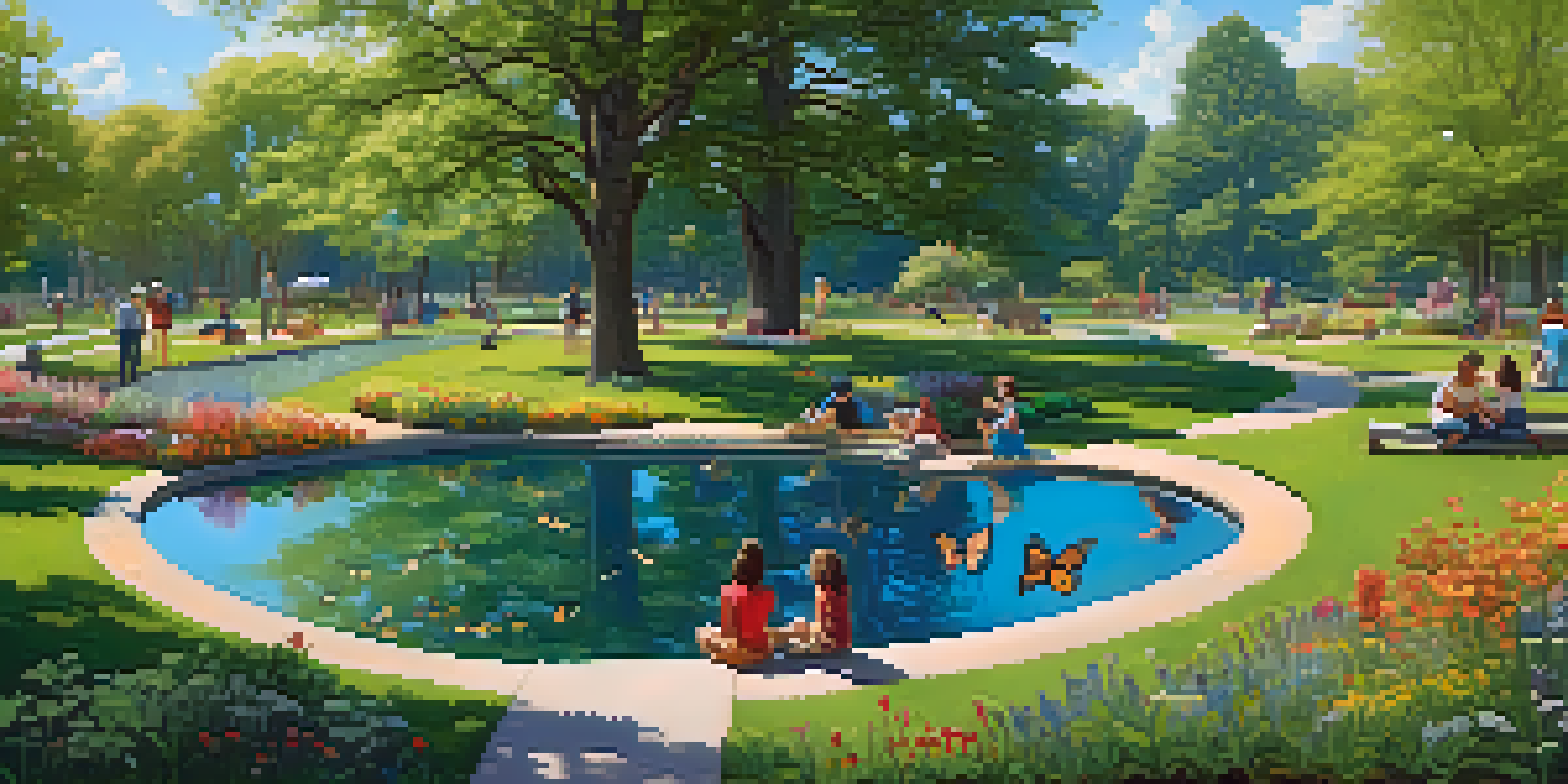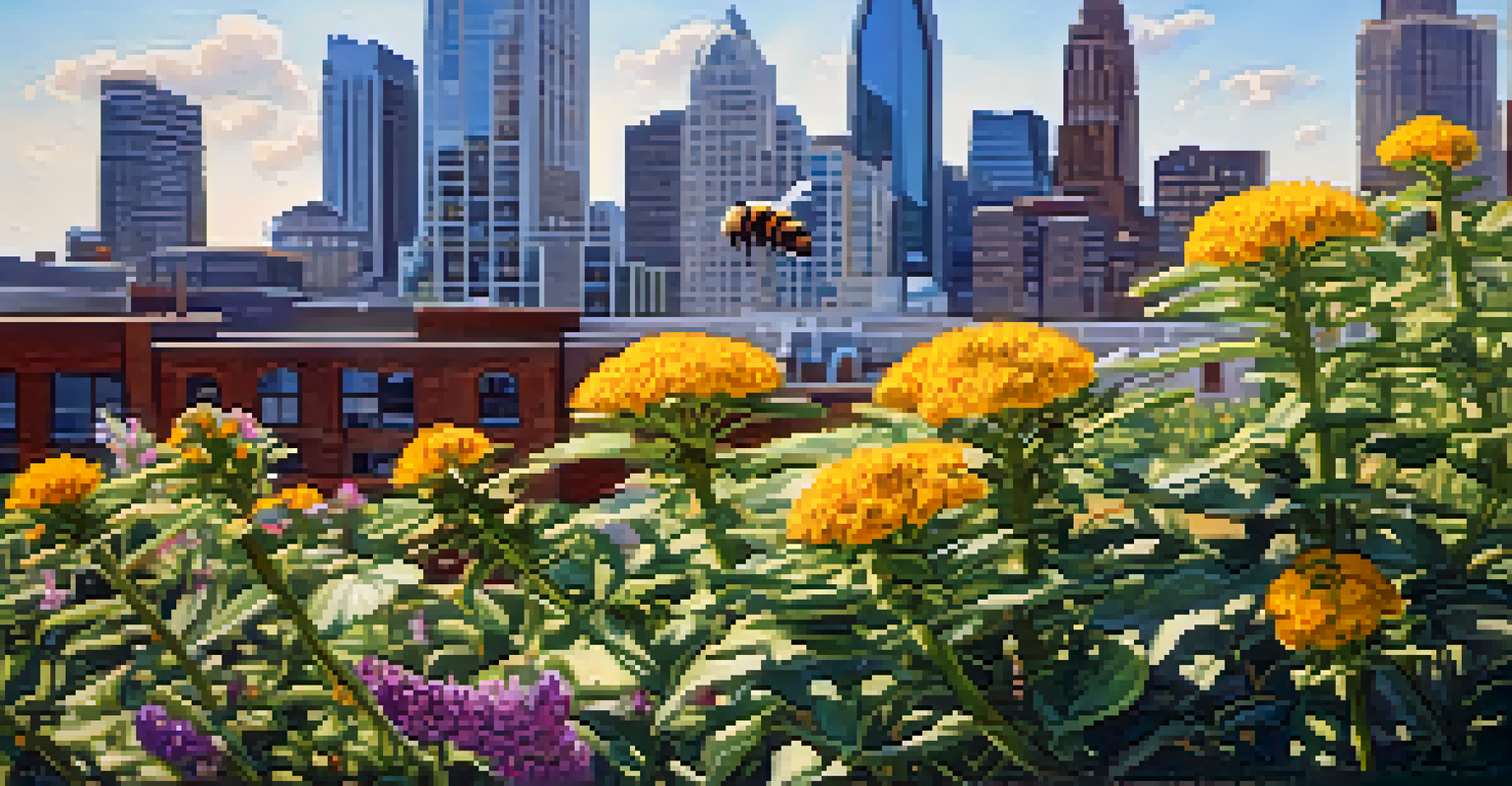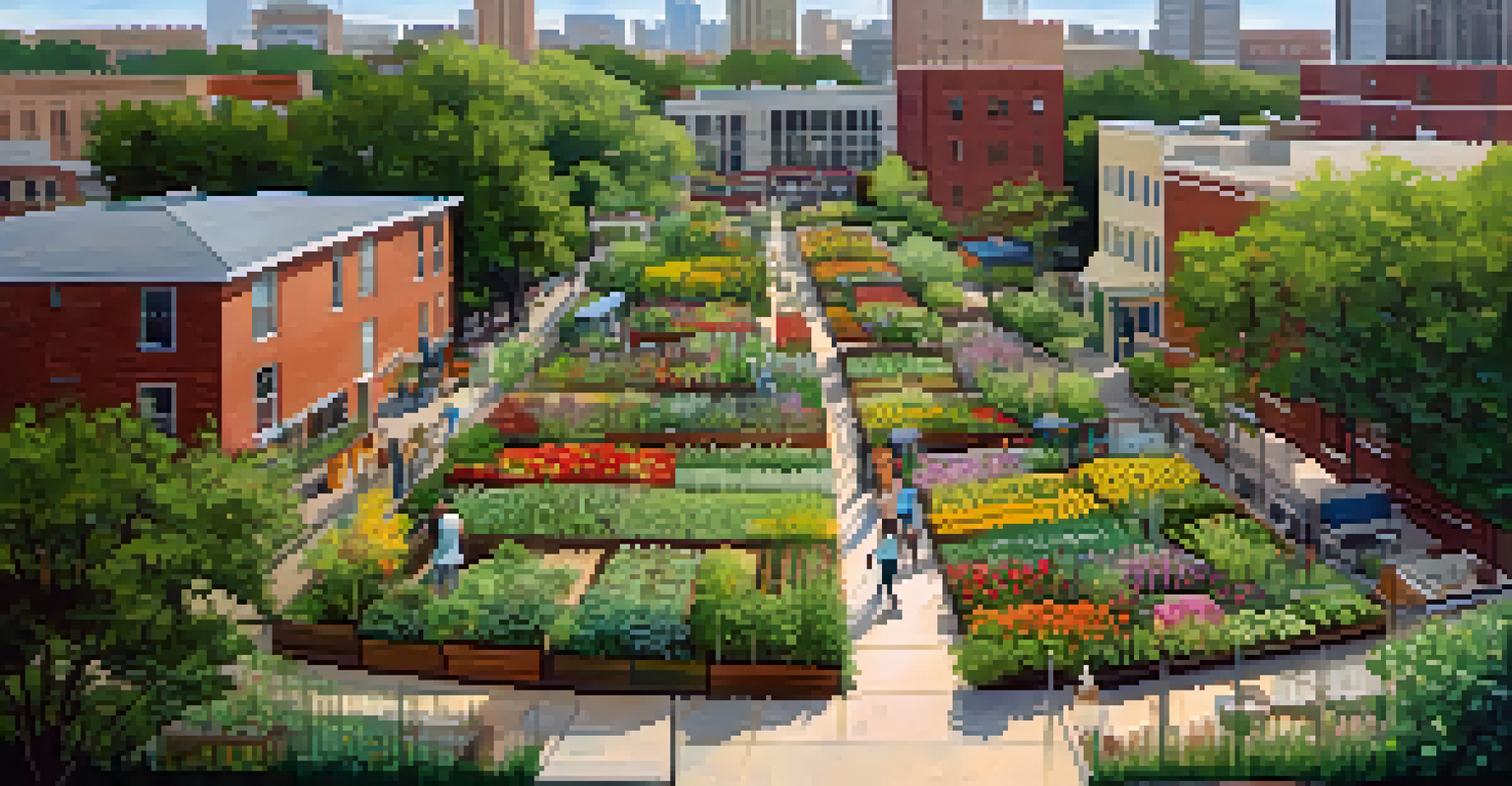The Role of Urban Green Spaces in Charlotte's Wildlife Health

Understanding Urban Green Spaces in Charlotte
Urban green spaces, such as parks and gardens, are essential for maintaining ecological balance in cities like Charlotte. These areas provide habitats for various wildlife, from birds to small mammals, ensuring they can thrive amid urban development. As Charlotte continues to grow, the preservation and creation of these green spaces become increasingly important for biodiversity.
Nature is not a place to visit. It is home.
In Charlotte, popular spots like Freedom Park and the Little Sugar Creek Greenway serve as vital refuges for wildlife. They not only offer a place for animals to live but also act as corridors that connect different habitats, allowing species to move safely throughout the city. This connectivity is crucial for maintaining healthy populations of urban wildlife.
Moreover, these green spaces contribute to the overall health of the local ecosystem. They assist in reducing pollution, improving air quality, and managing stormwater runoff, which in turn benefits both wildlife and the human population. Integrating nature within urban settings fosters a symbiotic relationship between humans and wildlife.
Benefits of Urban Green Spaces for Wildlife Health
Urban green spaces play a pivotal role in supporting the health of wildlife by providing essential resources such as food, water, and shelter. For instance, flowering plants attract pollinators like bees and butterflies, while trees offer nesting sites for birds. These resources are critical for species survival, particularly as natural habitats continue to diminish.

Additionally, green spaces serve as natural barriers to urban development. They reduce habitat fragmentation, allowing wildlife to maintain genetic diversity, which is vital for their long-term survival. When animals can interact and breed within larger populations, it strengthens their resilience to diseases and environmental changes.
Urban Green Spaces Support Wildlife
Parks and gardens in Charlotte provide essential habitats, food, and shelter for various wildlife species.
The presence of urban parks and gardens also encourages species adaptation to city life. Wildlife that thrives in these areas often exhibit behaviors that help them cope with urban stresses, such as noise and human activity. This adaptation is not only fascinating but essential for maintaining a balanced ecosystem in the heart of the city.
The Impact of Urbanization on Wildlife Health
As Charlotte expands, urbanization poses significant challenges to local wildlife health. The transformation of natural landscapes into concrete jungles can lead to habitat loss, making it difficult for animals to find food and shelter. This loss inevitably affects their populations and overall biodiversity within the city.
The best time to plant a tree was twenty years ago. The second best time is now.
Urbanization can also result in increased human-wildlife conflicts. Animals may wander into residential areas in search of food, leading to dangerous encounters. By understanding the importance of green spaces, we can mitigate these conflicts and create environments where wildlife can coexist peacefully with urban residents.
Moreover, pollution from urban areas can harm wildlife health. Contaminants in water and soil can lead to disease and reproductive issues in various species. By prioritizing green spaces and ensuring they are well-maintained, we can help combat these negative impacts and promote a healthier environment for all.
Promoting Biodiversity Through Green Spaces
Promoting biodiversity in urban environments like Charlotte starts with the enhancement of green spaces. By planting native species, we create habitats that support local wildlife and help maintain ecological balance. Native plants are adapted to the local climate and soil, making them more resilient and beneficial for the local ecosystem.
Community involvement in creating and maintaining urban green spaces can significantly boost biodiversity efforts. Local gardening groups, schools, and conservation organizations can collaborate to restore degraded areas and establish new gardens. These initiatives not only benefit wildlife but also foster a sense of community and environmental stewardship.
Community Involvement is Crucial
Engaging residents in the creation and maintenance of green spaces fosters biodiversity and enhances local ecosystems.
Additionally, educating residents about the importance of biodiversity can inspire them to take action. Simple steps, such as reducing pesticide use or creating wildlife-friendly gardens, can have a profound impact on local ecosystems. When communities understand their role in supporting wildlife health, they become more invested in preserving Charlotte's natural heritage.
Challenges in Maintaining Urban Green Spaces
Despite their importance, maintaining urban green spaces in Charlotte comes with its own set of challenges. Limited funding and resources often hinder the maintenance and development of these areas. City officials and organizations must prioritize these spaces to ensure they remain healthy and functional habitats for wildlife.
Invasive species also pose a significant threat to urban green spaces. Non-native plants can outcompete native vegetation, disrupting the delicate balance of the ecosystem. Managing these invasives requires ongoing effort and community engagement to ensure that local flora and fauna can thrive.
Moreover, climate change is increasingly affecting urban ecosystems. Changes in temperature and precipitation patterns can impact the availability of resources for wildlife. By investing in resilient green spaces, Charlotte can better prepare for these changes and support the health of its urban wildlife.
The Role of Community in Wildlife Conservation
Community engagement is vital for the conservation of wildlife in urban green spaces. Residents can play a crucial role in monitoring local wildlife, reporting sightings, and participating in conservation efforts. This grassroots involvement not only helps protect wildlife but also fosters a deeper connection to nature within the community.
Volunteering for local conservation projects can be a rewarding way for individuals to contribute. Whether it's planting trees, cleaning up parks, or advocating for wildlife-friendly policies, every small action counts. Such initiatives not only benefit wildlife health but also enhance the overall quality of life in Charlotte.
Urbanization Threatens Wildlife Health
As Charlotte grows, habitat loss and pollution pose significant challenges to the health and survival of urban wildlife.
Creating educational programs that focus on the importance of urban wildlife can also empower residents. Workshops, nature walks, and informational campaigns can raise awareness and inspire action. When communities understand the vital role of green spaces in supporting wildlife health, they are more likely to invest in and advocate for their preservation.
Future Directions for Urban Green Spaces in Charlotte
Looking ahead, the future of urban green spaces in Charlotte holds great potential for enhancing wildlife health. Continued investment in creating and maintaining these areas will be crucial as the city expands. By prioritizing biodiversity and ecological health in urban planning, Charlotte can create a model for sustainable city living.
Innovative approaches, such as green roofs and vertical gardens, can further enhance the available green space in urban areas. These solutions not only provide habitats for wildlife but also improve the city's aesthetic appeal and air quality. Integrating nature into urban design will help create a more livable environment for both people and wildlife.

Ultimately, fostering a culture of conservation within Charlotte will be key to the success of urban green spaces. Collaboration between city officials, residents, and conservation organizations will create a unified approach to wildlife health. Together, we can ensure that Charlotte remains a vibrant home for both its human and wildlife inhabitants.